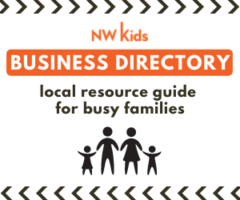Kids Understanding Adoption: 4 ways to support their wishes and wonders

November is National Adoption Month! We bring you some tips from child and family therapist MereAnn Reid on talking to kiddos about adoption and diverse families.
Kids work out their place and voice in the world by feeling seen and heard. Conversations about adoption, linking a child’s past and present with their future, expand their growing sense of self. It can be simple: a short photo story or rainy day couch cuddle can be a jumping off point.
First, then, now: A 3-photo story
Start conversations early. Even a baby or toddler loves a photo book about them!
1. The earliest image you have of your child in their first family or being cared for; focus on connection
2. Your child’s transition of care, together with birth family, social worker, or their caregiver to your family
3. An adoptive family portrait with your child anchors this series, showing their story evolve
I wish I grew in your tummy…
Young kids want to feel close to us, and what’s more connecting that being inside the one you love? (This is where Freud got a little stuck…) It feels good to be close, so focus your response there: snuggle and join in, reflecting what you hear, adding facts and feelings:
“Me, too, honey. I wish you grew in my tummy, and I would hold you all safe and cozy in there.”
“I know. I wish we could feel that close, too, like you came right out of me.” Start building in the rest of the story: “You know, that was your birth mom’s job in taking care of you. Being born is a special connection that a birth mom and a baby get to have that no one else can do for them. She gave you your birthday, your curly hair and green eyes.”
Why did you adopt me?
This question comes up at different ages, with varied emphasis.
Preschool, age 3-5: WHY…? Did you look for me? What did I need? What took you so long?
Early elementary, age 5-8: Why… ME? What did you like about me? Why didn’t they keep me?
Older elementary, age 9-12: Why… YOU? How did you find me? Who else knew about me?
Teens: Why… ADOPT? Why didn’t you give my birth parents money to take care of me?
Consider emotional and social development. Kids with regular opportunities to talk about adoption may cycle through these ideas earlier or explore them with adopted peers. As they develop friendships, abstract reasoning and identity layers, kids get curious – and sensitive – about what makes them special. At some stages, “special” feels more odd than prized.
4 Big Questions
The fact of adoption, tangled with attachment, loss and mystery, can create complexity even with predictable and positive rights of passage. Four common questions get stirred (Parenting Your Internationally Adopted Child (Cogen, 2008)): What’s the big thing that happened? Did I make it happen? Who will take care of me now? Will it happen again?
Focus on soothing these questions (which may arrive in other words or behavior) with empathy, integrating these worries into the context of first, then, now and next. Connection is essential in weathering change.
Adoption is a narrative to grow into, not away from.
MereAnn Reid is a child and family therapist and adoption consultant in Portland, OR. Her private practice includes play therapy, family counseling and parent coaching; she offers workshops with parents and professionals, and facilitates groups for children, teens, and parents. To learn more, visit NorthwestAdoptionSupport.com or reach out to NWAdoptionSupport@gmail.com.

